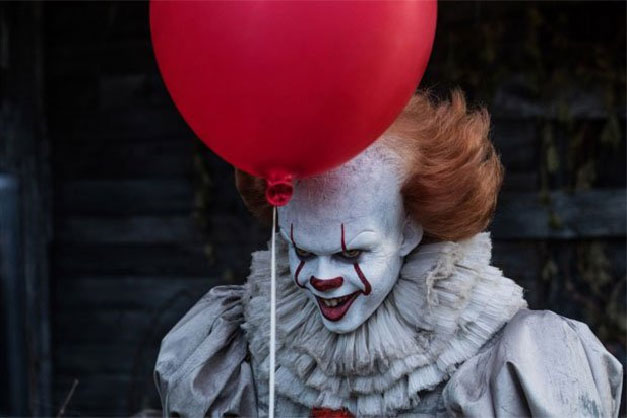Childhood Ruined: The Tragedy of SeaWorld
“I think that in 50 years, we’ll look back and go ‘My God, what a barbaric time.’”
The trailer for the documentary Blackfish
December 17, 2014
I remember having the time of my life walking around the SeaWorld theme park. The most memorable part of the visit was probably seeing the orca shows. There was something mesmerizing about watching the killer whales jump and splash around to played-out rock songs in their tank. After the show, my family and I would laugh and tell each other what our favorite part was. Then, we got to go home. The orcas stayed in their tanks.
There are currently 52 orcas in captivity around the world. At least 144 orcas have been taken from the wild since 1961. 125 of them are now deceased. In total, 159 orcas have died in captivity, and this is not including the thirty miscarried or still-born calves. This also does not count the killer whales murdered in the hunt. It all began in Washington, when SeaWorld sent fishermen to capture killer whales for entertainment, separating the youngest whales from their mothers. In the hunt (or kidnapping), there are always whales that get caught in the net and die. The fishermen are ordered to cut open the whales, throw rocks or chains in the lifeless bodies, and sink them to the bottom of the ocean. Washington no longer allows SeaWorld to hunt for killer whales in their state, but that didn’t stop SeaWorld from starting their hunts in Iceland. This is only the beginning.
These whales are stolen from their families, and for what? To perform in three shows a day for people’s entertainment. What happens after the shows? The whales are out of sight and out of mind, in a tank, which to them, is like being stored in a closet. An orca at SeaWorld would have to swim the circumference of the main pool more than 1,400 times to match the equivalent daily distance traveled in the wild. A tank is not a suitable place for an animal that big. This small enclosure causes many problems such as dorsal collapse, shortened life-span, psychosis, and death by other whales.
To cover the harsh conditions of captivity, SeaWorld lies to defend the company by claiming these whales die at age 25 to 35 years old, and dorsal fin collapse happens in 25% of killer whales. None of this is correct.
Dave Duffus has spent years studying orcas. “We knew by 1980, through research that they live equivalent to human life spans and every other potentially embarrassing fact is twisted and turned and denied one way or another,” says Dave Duffus. “Dorsal fin collapse happens in less than 1% of Killer Whales.” Duffus also mentions that the actual lifespan of a kKiller wWhale can be as long as a human being’s, and sometimes even longer. Living in a tank is simply unhealthy.
SeaWorld in Orlando currently has six6 live whales, all thrown together in one small tank. This is not good for the whales because they are forced to be together, without consideration of the whales getting along or not. A perfect examples to show this forces family at SeaWorld happened in 1989. A whale named Kandu bled to death in one of the pools after trying to attack another whale named Corky. The deaths do not stop with the whales. To date, there have been three human deaths at SeaWorld. All of them were caused by Tilikum, the “loneliest whale” in the world. Tilikum’s story proves that all whale captivity is bad, not just at the hands of SeaWorld.
“You’ve got animals from different cultural subsets that have been brought in from various parks. These are different nations. These aren’t just two different killer whales. These animals–they got different genes. They’ve got different languages.” – Blackfish
Tilikum’s story begins in Iceland, in November of 1983, when he was captured. At only two2 years old, Tilly was 13 feet long. TIlikum had experienced years of torture at the hands of people before he came to SeaWorld. Tilikum is responsible for the deaths of three people. At Sealand, Tilikum drowned and killed the trainer Keltie Byrne. Regardless of his history of aggression, SeaWorld bought Tilikum, the largest orca bull in captivity for breeding purposes. 54 percent of SeaWorld’s Orcas have Tilly’s genes. While at SeaWorld, Tilikum killed Daniel P. Dukes in 1999 and Dawn Brancheau in 2010. The death of Dawn was the last straw as, it caught the attention of more people to change animal captivity. SeaWorld blamed Dawn, a senior trainer who was described to be a perfectionist, for her own death. They said it was a trainer mistake, and Tilikum was not responsible for the death. They blamed someone who was not there to defend themselves.
SeaWorld has 600 pages of incident reports documenting dangerous and unanticipated orca behavior with trainers, consisting of more than 100 incidents in which killer whales bit, rammed, lunged at, pulled, pinned, and swam aggressively with SeaWorld trainers. Captivity leads the Killer Whales to having a psychosis. Don’t you think after living a majority of your life in a bathtub, you’d go mad too?
SeaWorld will do anything to not lose money. They even appealed the citation for violating a federal workplace law making it okay for trainers to work with orcas despite the risk. Instead of releasing Tilly back into the wild because of his aggression, they keep him because his sperm is valuable.
If this article has not convinced you to never visit SeaWorld again, know this. There have been 138 reported incidents at SeaWorld, and three deaths in captivity. How many injuries and attacks have there been in the wild? None.







